-
Welcome back Guest! Did you know you can mentor other members here at H-M? If not, please check out our Relaunch of Hobby Machinist Mentoring Program!
You are using an out of date browser. It may not display this or other websites correctly.
You should upgrade or use an alternative browser.
You should upgrade or use an alternative browser.
Using a Fly Cutter
- Thread starter oskar
- Start date
- Joined
- Aug 22, 2012
- Messages
- 4,254
As someone with no training I will jump in here with my thoughts.
It covers a larger area in one sweep thus hopefully producing a smoother surface.
I used a home made type of fly cutter when surfacing a part for my vertical slide that I would have hated to do with an end mill.
post 5
https://www.hobby-machinist.com/threads/a-vertical-slide-for-a-9x20-lathe.49724/
It covers a larger area in one sweep thus hopefully producing a smoother surface.
I used a home made type of fly cutter when surfacing a part for my vertical slide that I would have hated to do with an end mill.
post 5
https://www.hobby-machinist.com/threads/a-vertical-slide-for-a-9x20-lathe.49724/
- Joined
- Dec 2, 2012
- Messages
- 1,780
What is the purpose of a fly cutter and why use it instead of an endmill?
Thank you
Nicolas
Fly cutters are very cheep to run if you use HSS tool, as the cutter can be easily sharpened when compared to an insert based face mill for example.
Stu
You can also use a fly cutter (single point) on smaller, less powerful machines that would struggle with a face mill.Fly cutters are very cheep to run if you use HSS tool, as the cutter can be easily sharpened when compared to an insert based face mill for example.
Stu
- Joined
- Aug 7, 2018
- Messages
- 668
Hi Guys,
A fly cutter is a very very useful tool, they do however have some failings, vibration, due to an out of balance condition, chatter due to the toolbit not being rigid enough.
Here are some pictures of my home brew fly cutters.
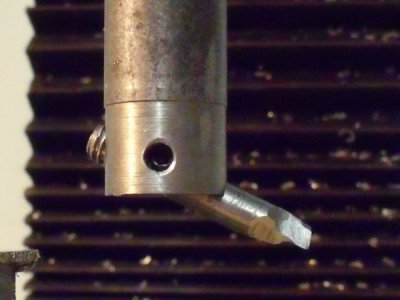
This works OK, however it suffers from too long a shaft, and too much cutter stick out. This one was intended for deep hole work on a 50 mm bore.
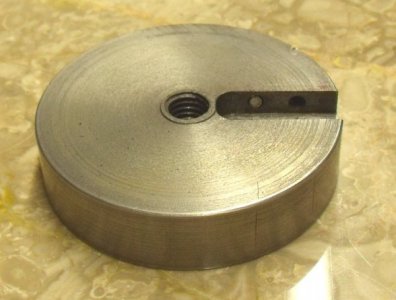
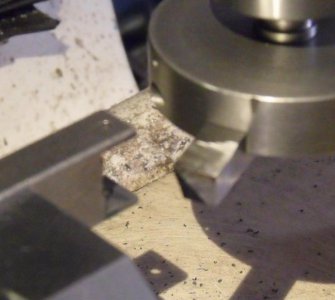
This one was made and used to clean a forked end and machine to size. Sorry about the focus.
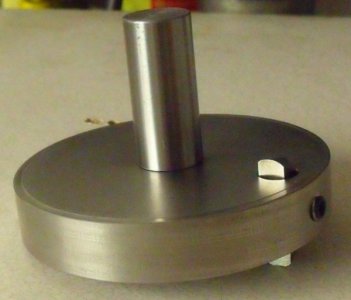
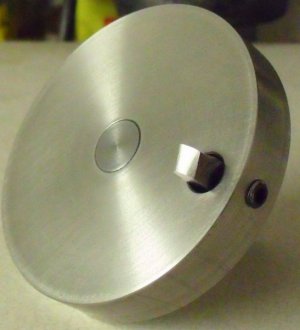
This one was made for surfacing and getting a relatively large area machined in one go. It also has the advantage of balance, rigidity and depth of cut. I can take a 40 thou cut in steel without any chatter. This type also has the advantage of mass.
They are also very easy to make. The one above is 3" inches in diameter and 20 mm thick on a 20 mm X 50 mm shaft. The tool bit is a piece of square HSS lathe tool.
A fly cutter is a very very useful tool, they do however have some failings, vibration, due to an out of balance condition, chatter due to the toolbit not being rigid enough.
Here are some pictures of my home brew fly cutters.

This works OK, however it suffers from too long a shaft, and too much cutter stick out. This one was intended for deep hole work on a 50 mm bore.


This one was made and used to clean a forked end and machine to size. Sorry about the focus.


This one was made for surfacing and getting a relatively large area machined in one go. It also has the advantage of balance, rigidity and depth of cut. I can take a 40 thou cut in steel without any chatter. This type also has the advantage of mass.
They are also very easy to make. The one above is 3" inches in diameter and 20 mm thick on a 20 mm X 50 mm shaft. The tool bit is a piece of square HSS lathe tool.
- Joined
- Dec 2, 2012
- Messages
- 1,780
You can also use a fly cutter (single point) on smaller, less powerful machines that would struggle with a face mill.
Thats true too, I'm not sure if a face mill is better at when its hitting the edge or a hole in a thin part, Ive had a little chatter at edges when fly cutting, but I have a smaller mill so I tend not to get into face mills as you say HP and all that.
Use a fly cutter in a wobbly machine such as a Bridgeport R8 knee mill.
If you are knocking a good deal of material off of a flat part and have time constraints use a face mill, this will not likely produce the hobbyist finish results that you require, a fly cutter may be slow but is more likely to produce the uniform finish that you expect.
If you are knocking a good deal of material off of a flat part and have time constraints use a face mill, this will not likely produce the hobbyist finish results that you require, a fly cutter may be slow but is more likely to produce the uniform finish that you expect.
